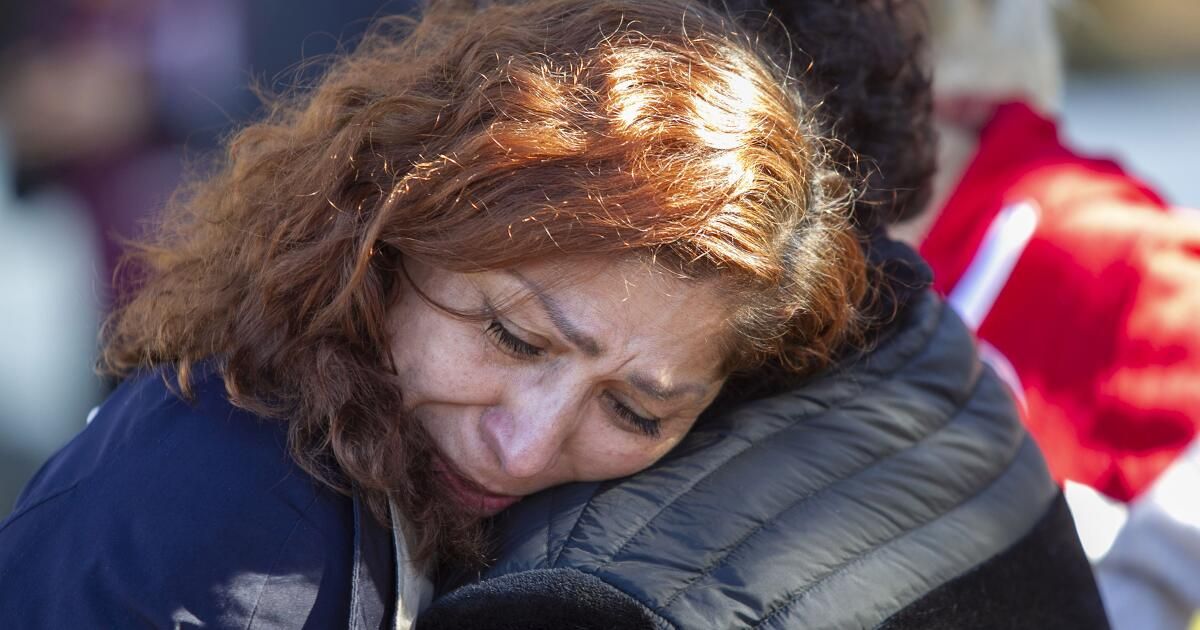Will President-elect Donald Trump's promise to “launch the largest deportation program in American history” really keep millions of immigrants out of the country? My research on deportees over the past five years suggests that will not be the case.
Here's why: they will return.
One of the migrants I interviewed was deported to a dangerous town in northern Mexico, where he found himself in immediate danger upon arriving at a bus terminal. Members of a criminal group demanded that he hand over a password – a password you didn't have – or face kidnapping. Finally, he borrowed $1,500 from a friend to pay it off, remain free, and return to the United States.
Their experience is an example of the risks deportees face in their countries of origin. Those dangers (and the relative safety of the only homes they have) often motivate them to undertake harrowing journeys back to the United States.
Although data on deportees is somewhat limited, the evidence we have shows that people re-immigrate after deportation more frequently than many might expect. In fiscal year 2020, for example, the federal government classified 40% of deportations as “removal resets,” meaning that deportees had reentered the United States after being expelled or ordered to leave. A 2019 report by the American Immigration Council, an immigration advocacy group, similarly noted that such removal reinstatements typically account for 40% of annual deportations. From 2011 to 2020, approximately 1.3 million deportations affected people who had been previously deported.
This is because deportation policies are, at best, blunt instruments that take little account of the human lives they ensnare. Those who see mass deportation as a solution to unauthorized immigration ignore the deep roots, sense of belonging, family ties and determination that drive people to return to the country they call home.
Undeterred by deportation, the people I have interviewed have found ways to return to the United States with or without permission. Their stories reveal the rarely discussed truth that deportation is not necessarily the end of migration; This is often a temporary and useless interruption.
I spoke with another man who was born in Mexico but grew up in the United States, served in the military, and struggled with post-traumatic stress disorder. Due to a minor charge of cannabis possession, he was deported to a country he barely remembered. In 2021, more than a decade after his exile, he returned to the only land he considers his own, the United States.
“You can travel the world,” he told me, “but eventually your heart and your spirit will call you home.”
Another Mexican-born, American-raised military veteran I interviewed was also deported on a marijuana charge. Feeling “erased from existence,” he risked his life to return less than a month later.
“I don't need a document to tell me I'm American,” he told me.
These stories expose a fundamental flaw of mass deportation. In contrast to the cyclical migration patterns of previous decades – when migrants, mostly men, moved back and forth between the United States and Mexico with relative ease in response to the labor market – the current cycle is driven by government coercion and unbreakable ties. . Forced departures lead to inevitable returns, as deportees are drawn by connections that no law enforcement measures can break.
The coyotes who traffic them have become part of what anthropologist Jason De León calls a “border-security-industrial complex.” If his illicit businesses went public, his shares would soar on renewed demand. Meanwhile, border control policies push migrants into treacherous terrain where they face dehydration, hypothermia and death in the desert.
For deportees, returning is an act not only of determination, but of survival. Some are lucky enough to return, but as the Spanish saying goes: “The pitcher goes so far into the water until it breaks”: The pitcher goes to the well until it finally breaks. Deportation policies push people to take greater and greater risks to return to the only homes they have ever known. The next attempt could always be the last.
Deportation may well become the defining issue of our era if we continue down this punitive path. When mass deportations fail, what next? Will we see modern versions of Franklin D. Roosevelt's executive order authorizing the forcible removal and incarceration of Japanese Americans, with “resettlement centers”?
Under a very different executive order signed by President Biden in 2021, the departments of Homeland Security and Veterans Affairs prioritized the return of deported US military and their families. The Deferred Action for Childhood Arrivals program, known as DACA, also sought to recognize long-time residents' ties to the country and restore their place in the American communities they call home.
These policies live up to American ideals of justice and inclusion by embracing those who, in every meaningful sense, already belong. Mass deportation would betray those values, put even more lives at risk, and too often fail on its own terms.
Saúl Ramírez is a member of Harvard Law School and a doctoral candidate in sociology at Harvard.











